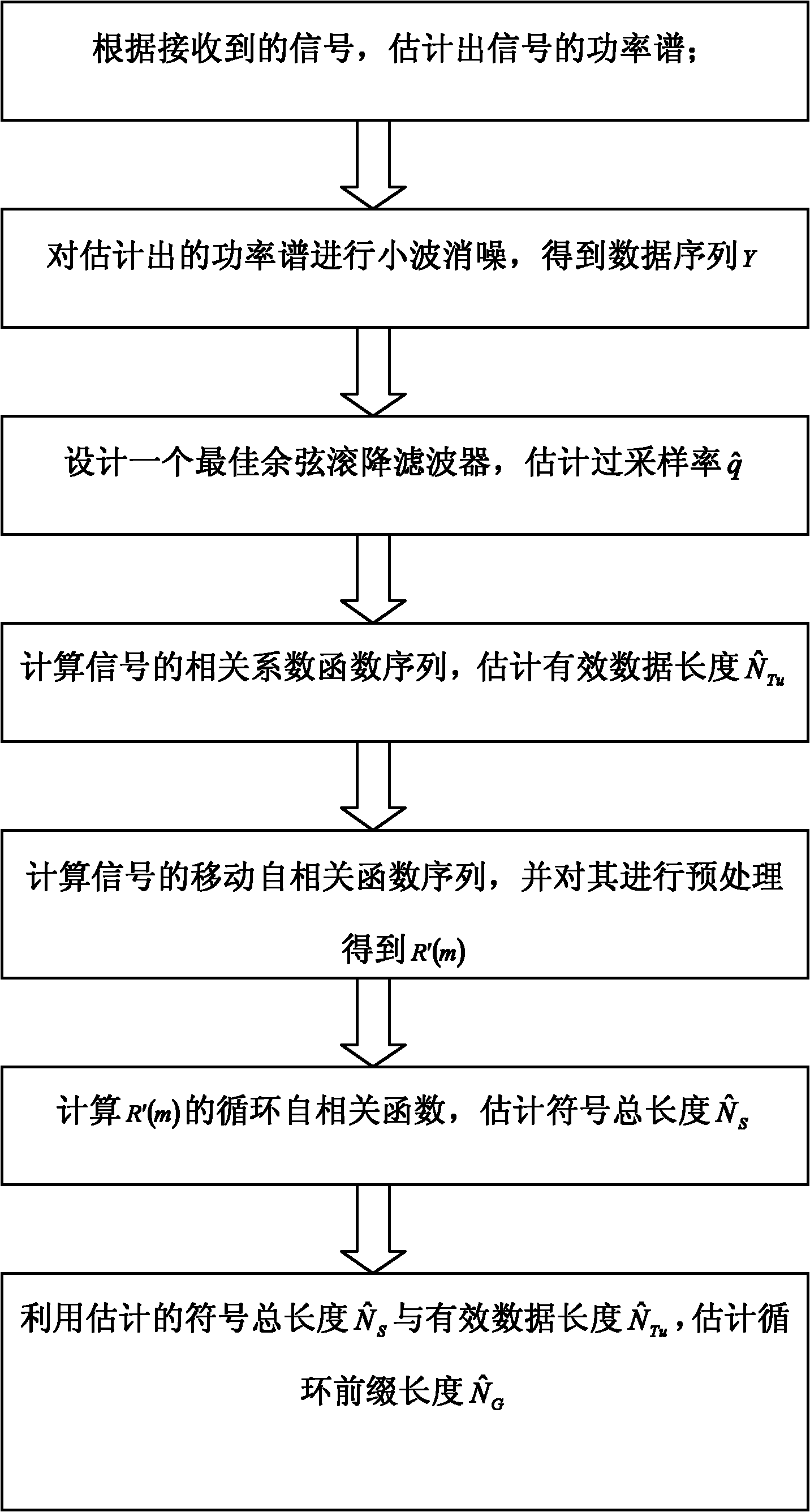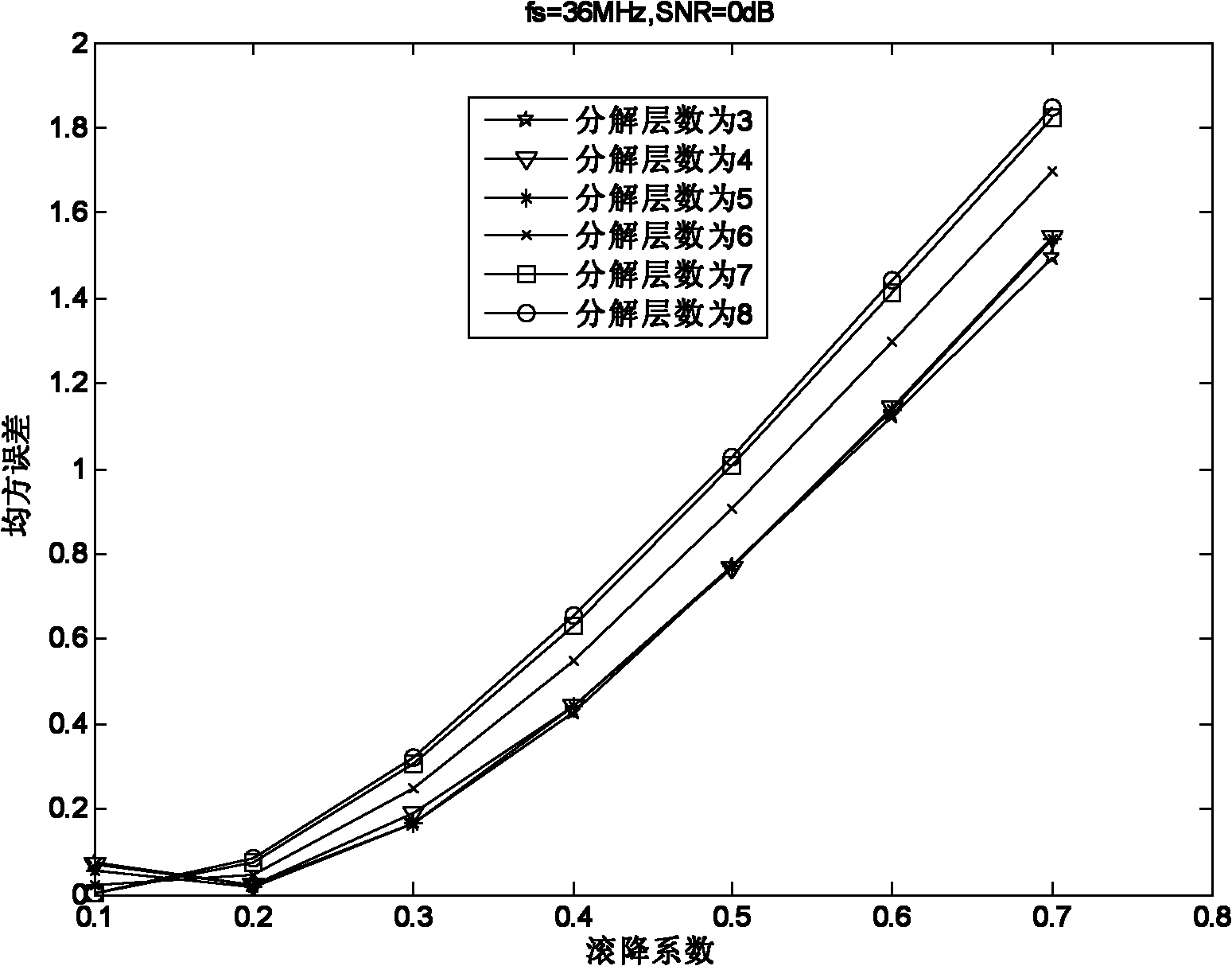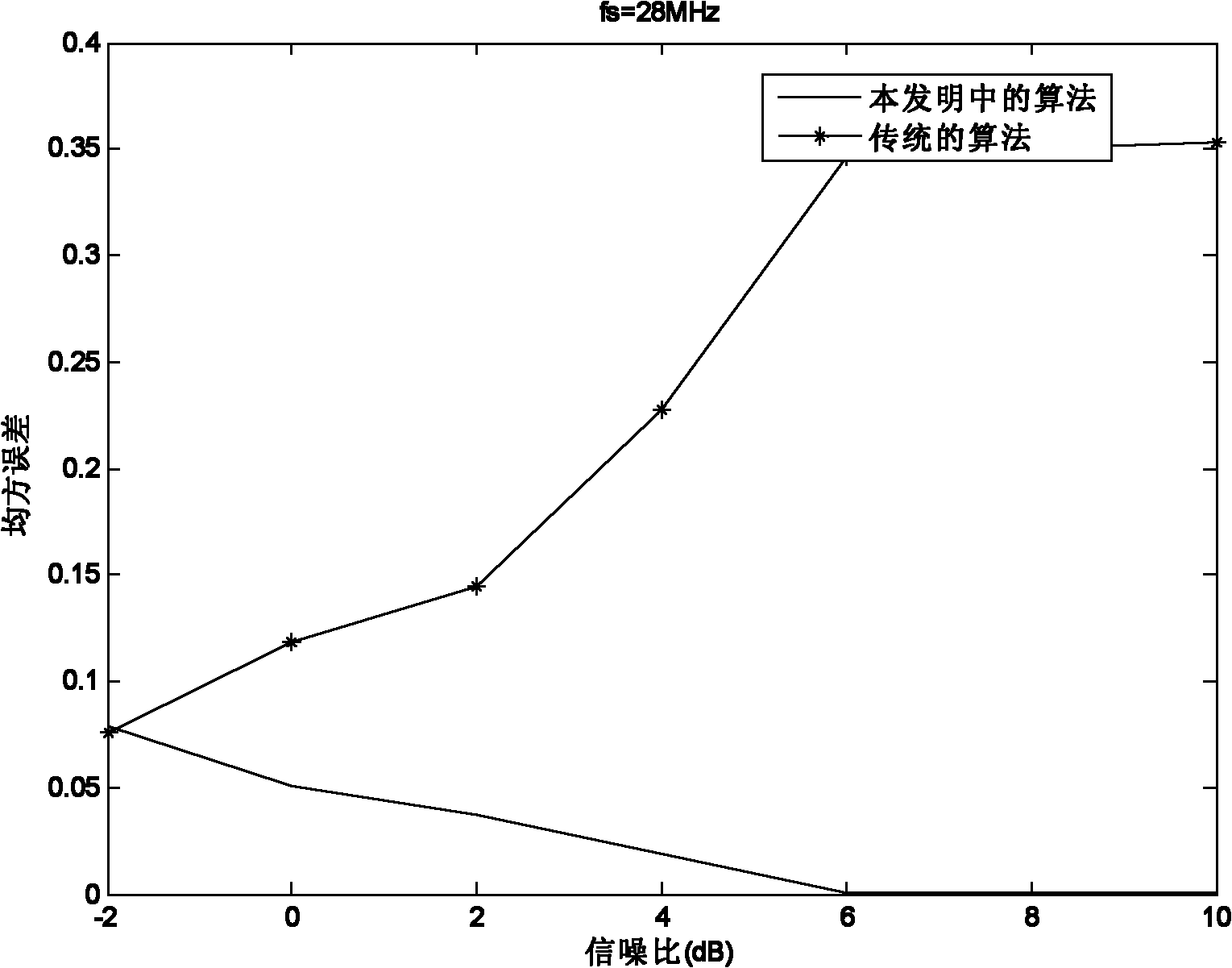Time domain parameter blind evaluation method of OFDM (Orthogonal Frequency Division Multiplexing) signals
A time-domain parameter and blind estimation technology, applied in baseband system components, multi-frequency code systems, etc., can solve problems such as unsuitable for wireless channel applications and poor estimation performance, and achieve the effect of reducing computational complexity and improving estimation performance
- Summary
- Abstract
- Description
- Claims
- Application Information
AI Technical Summary
Problems solved by technology
Method used
Image
Examples
Embodiment Construction
[0030] The OFDM signal used in the present invention is a DVB-T OFDM signal 2K FFT mode, and the multipath channel is a GSM TU 6-path channel model.
[0031] refer to figure 1 , the specific implementation steps of the present invention are as follows:
[0032] Step 1, utilize Welch method to estimate the power spectrum of OFDM baseband oversampling signal r (i), wherein i=1, 2, Λ, N, N is the data length of interception:
[0033] 1.1) Divide the intercepted OFDM baseband oversampling signal r(i) into L segments, each segment data length M L , the OFDM baseband oversampling signal data in the first section can be expressed as:
[0034] r l (k')=r(k'+(l-1)·M L ), k'=1, 2, ΛM L , l=1, 2, Λ, L 1)
[0035] in l represents a data segment variable, k' represents a data symbol variable;
[0036] 1.2) Add the window function w(k′) to each segment of data to obtain the corrected periodogram of each segment, and the corrected periodogram of the first segment is expressed as:
...
PUM
 Login to View More
Login to View More Abstract
Description
Claims
Application Information
 Login to View More
Login to View More - R&D
- Intellectual Property
- Life Sciences
- Materials
- Tech Scout
- Unparalleled Data Quality
- Higher Quality Content
- 60% Fewer Hallucinations
Browse by: Latest US Patents, China's latest patents, Technical Efficacy Thesaurus, Application Domain, Technology Topic, Popular Technical Reports.
© 2025 PatSnap. All rights reserved.Legal|Privacy policy|Modern Slavery Act Transparency Statement|Sitemap|About US| Contact US: help@patsnap.com



